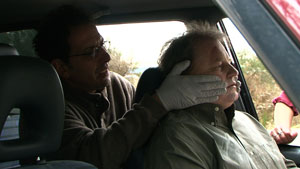 The Brain Injury Association of America (BIAA) has chosen “Anytime, Anywhere, Anyone: Brain Injuries Do Not Discriminate” as this year’s focus for Brain Injury Awareness Month. According to a downloadable fact sheet provided on their website, TBIs (traumatic brain injuries) may be more prevalent than you think:
The Brain Injury Association of America (BIAA) has chosen “Anytime, Anywhere, Anyone: Brain Injuries Do Not Discriminate” as this year’s focus for Brain Injury Awareness Month. According to a downloadable fact sheet provided on their website, TBIs (traumatic brain injuries) may be more prevalent than you think:
- 2.4 million people, including 475,000 children, sustain a TBI in the U.S. each year. 5.3 million individuals live with life-long disability as a result of TBI.
- 52,000 people will die. 275,000 people will be hospitalized. 1.365 million people will be treated and released from an emergency department.
- TBI is a contributing factor to a third (30.5%) of all injury-related deaths in the United States.
- About 75% of TBIs that occur each year are concussions or other forms of mild traumatic brain injury (MTBI).
Head and brain injuries can be the result of many types of incidents, such as falls (35%), car crashes (17%), workplace accidents (16%), assaults (10%), and other causes (21%).
Download the TBI fact sheet from the BIAA here.
Thanks to the ongoing media focus on the NFL about the prevalence of head injuries among athletes, concussion awareness is on national radar these days. Of special concern are the head injuries sustained by students participating in various sports. The School of Nursing and Health Studies at Georgetown University has put together a fact-filled infographic about student athletes and head trauma and has made it available for downloading.
 |
As the infographic explains, “Each year, 1.6 to 3.8 million sports-related concussions occur, and approximately half of those hospitalized with a head injury are 24 years old or younger. Concussions are often not treated properly and sometimes not even recognized at all.”
A blow or force to the head can cause a concussion or mild injury to the brain. This can result in problems with concentration, memory, judgment, balance, and coordination.
Symptoms of concussions include confusion, nausea, vision changes, dizziness, tinnitus, vomiting, and headache.
What to do when someone has a head injury
Head trauma can result in internal injury to the brain and soft tissues within the skull. Swelling or bleeding from the injury can cause increasing pressure within the skull and damage to the delicate brain tissue.
Suspect a brain injury when a blow to the head results in confusion or disorientation. Surgical intervention may be the only treatment. Activate EMS immediately and provide spinal motion restriction.
If a bleeding wound is present, place an absorbent pad directly over the area. Do not try to stop the flow of blood or fluid from the ears or nose.
Closely monitor the person’s level of responsiveness. If fluid accumulates in the mouth or vomiting occurs, roll the person onto her side to protect the airway.
If the person has a seizure, maintain spinal motion restriction and protect her from bumping into nearby objects. Do not restrain the person tightly and do not place anything in her mouth. Seizures generally last for just a few minutes.
Reassess regularly until another provider or EMS take over.
Our 24-7 EMS library offers a course focused on the challenges facing responders in dealing with head trauma. Early recognition and prompt care is vital, and spinal immobilization and a thorough, rapid trauma assessment must be performed. In this 1.5 CEH course, featuring Dan Carlascio (National Faculty, Brain Trauma
Foundation), the Glasgow Coma Score and anatomy and physiology of the skull and brain are reviewed with graphics and photos.






.png?width=600&name=HSI-CTA-EmergencyCareTraining%20(1).png)











Comments